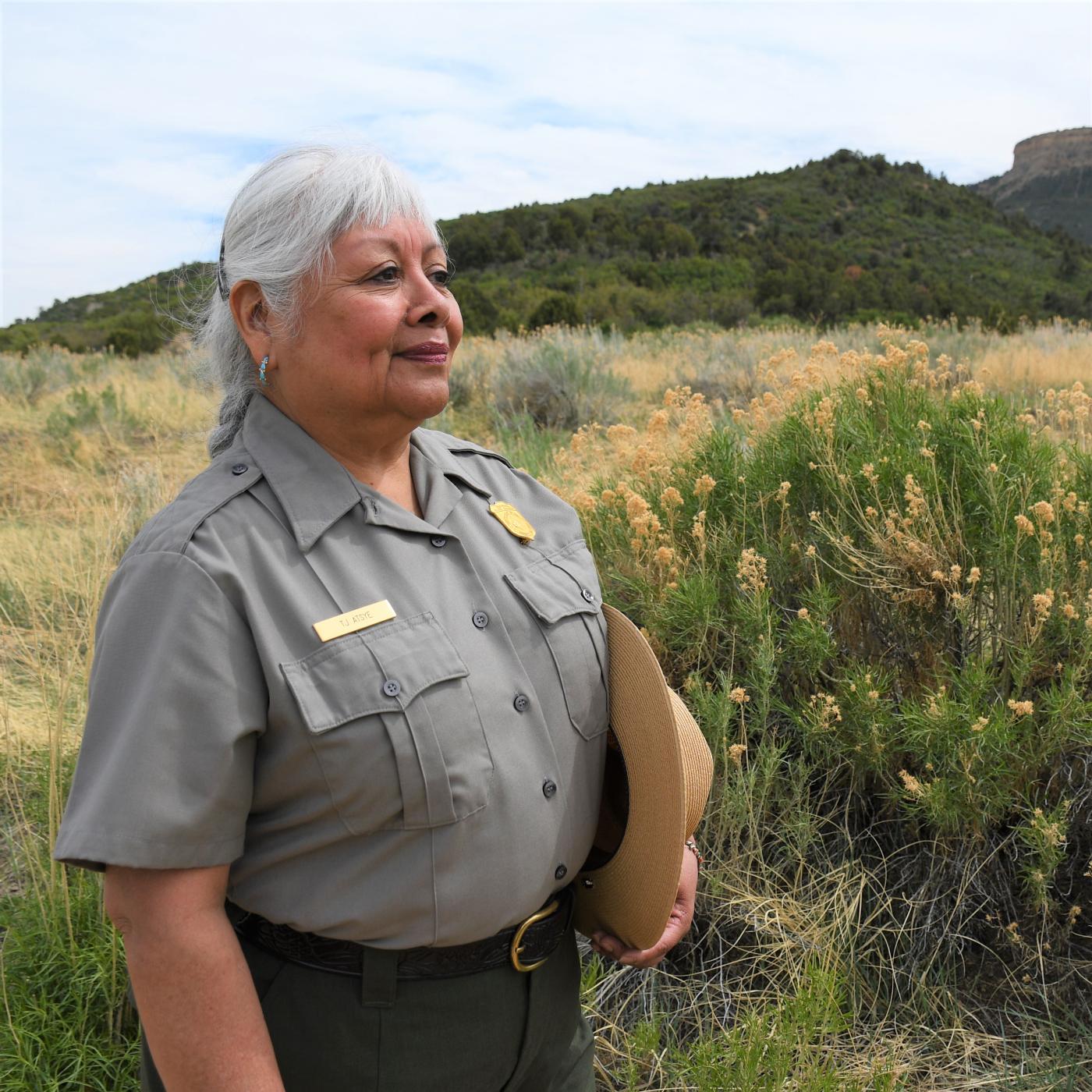Stop 9: Fire Temple and New Fire House
Transcript
Stop 9: Fire Temple and New Fire House
Looking down at the head of this canyon, you can see one of these lush springs. Across the canyon and to the right, you can see the upper and lower alcoves of New Fire House. Can you see the hand-and-toe-hold trail connecting them?
On the left is Fire Temple, with a large open plaza. Of the nearly 5,000 archeological sites found at Mesa Verde, there are only a few plazas like the one at Fire Temple. This plaza here, like the one in Long House, is very similar to the plazas built in the center of modern-day Pueblos. Can you see the white plaster on the back wall of the plaza? When archeologists uncovered it in the early 1900s, it was still adorned with paintings of rain clouds, people, animals, and cacti.
Every Pueblo today has a plaza like this at its center, where we hold feast days and dances. One of my favorite places in Mesa Verde is Long House, over on Wetherill Mesa.
Every time I descend into the little canyon and walk into the big plaza, I can imagine seeing it filled with dancers, little kids in full regalia, and all the people gathered, crowded together, sitting on the rooftops. I can hear and feel the drums. It makes me want to put on my traditional sewn dresses under my black manta and my moccasins that my father made for me a long time ago and join in, dancing each step to match the beat of the drum.
I think that arriving at one of these plazas here would have been very similar to what you will experience at a present-day Pueblo feast day. You'll see the people honoring the dancers, enjoying the festivity, listening to the singers, feeling the beat of the drums.
The best way that we pray is through song and dance, so everyone in the community joins in. The plaza is alive. It generates so much warmth and hospitality. Many will put out blankets and food and invite everyone to eat there. The plaza is an important part of Pueblo life, who we are, and how we carry on today.
If you have a chance to visit any of the Pueblos, you will see these traditions. You are welcome to come to one of our Pueblo feast days or dances and make that connection for yourself.
Now, let’s continue on to Sun Temple. When you reach the fork in the road, turn right.
Fire Temple and New Fire House

